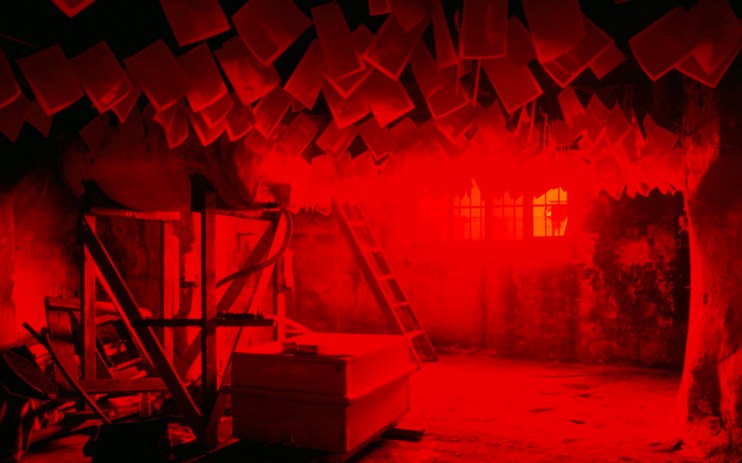Mike Nelson: Extinction Beckons at the Hayward Gallery is a new high bar for installation art

The Hayward Gallery has emerged as London’s foremost destination for large-scale installation art since it reopened in 2018, from the bio-technological horror of Lee Bul’s pink tentacles to the jaw-dropping scale of a Finnish spruce in Among the Trees.
But even against this backdrop, Mike Nelson’s Extinction Beckons sets a mind-boggling new standard for transforming a space, converting both floors into a sprawling, interconnected installation that imagines and examines possible futures for mankind.
It begins in the dark. You enter through a red-lit warehouse stacked high with wooden planks and wrought iron doors and all manner of nicknacks, a scene-setter for what’s to come.
Next you’re met by a vast wooden structure made up of a warren of corridors and little rooms. There’s a speakeasy bar, a gambling den, a low-rent travel agent, all deserted. There are stories to be unravelled here: a hastily-extinguished cigarette suggests someone left in a hurry; an upturned chair in the makeshift casino hints at recent violence.
The Hayward Gallery’s main exhibition space is filled with grids of concrete rebar interspersed with rubber castings of faces, some stretched grotesquely between the geometry of the metal.
Nearby there’s the abandoned (again) hideout of a fictional biker gang, strewn with cigarette lighters and, for some reason, razor clam shells. In each of these possible futures it’s up to the viewer to finish the puzzle, to bring their own fragments of narrative.
It’s a career survey of sorts, or at least as close as you can get to one given the ephemeral nature of Nelson’s work (only one of his pieces is in a collection and most of his work is dismantled after being displayed). A case in point is the partially buried desert shack surrounded by shredded tires and old oil drums, which houses a dark room full of photographs of the same installation being constructed 20 years prior, toying with the concept of permanence.
It’s a fascinating, absorbing exhibition, at once joyous and melancholy, and utterly unlike anything else.
